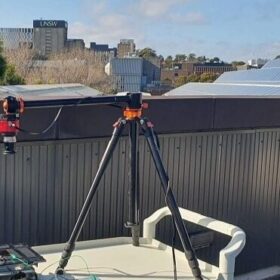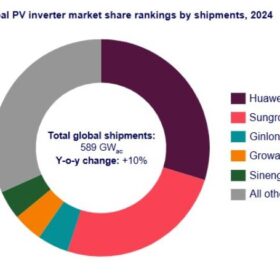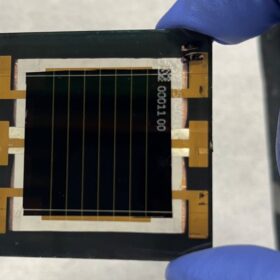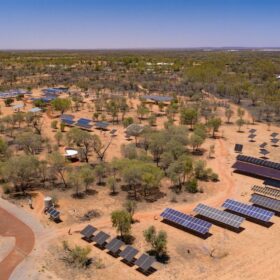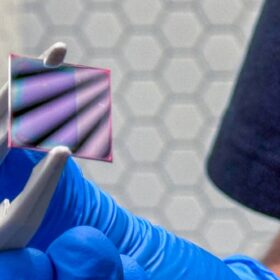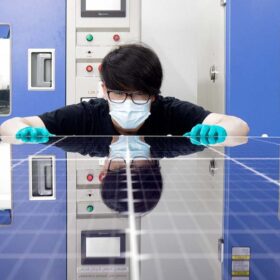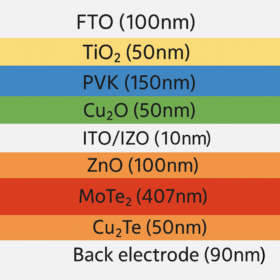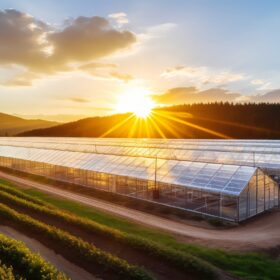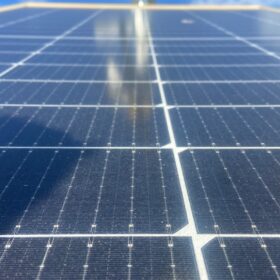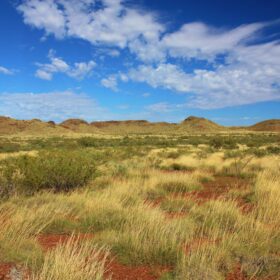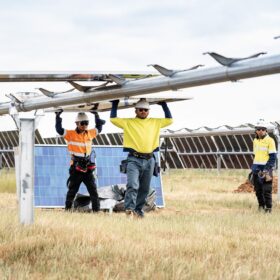Using photoluminescence, implied open-circuit voltage imaging for perovskite solar cell field testing
To evaluate the outdoor performance and stability of perovskite solar cells using contactless and noninvasive methods, an Australian and Chinese research team found a way to use photoluminescence imaging as well as demonstrating a proof of concept for implied open-circuit voltage imaging. Their research relied on cost-effective equipment that operates under direct sunlight.
Upcycling solar glass waste to use in solid-state lithium batteries
Researchers in Singapore have milled solar panel glass waste for use in cathodes in solid-state lithium metal batteries. When used as a functional filler in solid polymer electrolyte (SPE) material, the resulting battery performance was maintained over 80 charge cycles with an 8.3 % improvement over the reference device.
Huawei leads global inverter market as shipments hit 589 GW in 2024
Chinese companies made up nine of the 10 largest global inverter suppliers in 2024, with total inverter shipments reaching 589 GW (AC), according to Wood Mackenzie.
NREL, CubicPV achieve 24% efficiency for perovskite mini solar module
A United States-based collaboration between the National Renewable Energy Laboratory and CubicPV has yielded a perovskite minimodule with certified efficiency of 24.0%. The two noted that it is the first time a U.S. effort has set a record in the perovskite mini module category.
First Nations wisdom improves AI solar power prediction model by 14.6%
Researchers have combining advanced AI techniques with First Nations seasonal data and discovered a 14.6% more accurate way to predict solar power generation, with potential to improve renewable energy planning.
Researchers discover method to extend quantum battery lifespan by 1,000 times
While attempting to address suparradiance in Dicke quantum batteries to leverage their fast charging qualities, researchers at RMIT University and the CSIRO have developed a method to extend the lifetime of quantum batteries by 1,000 times.
ARENA backs next-gen solar innovation with $60 million funding boost
The Australian government has announced $60 million in new funding for research and development projects that promise to accelerate cost reductions for PV technology and help meet the stretch target for “ultra low-cost” solar production.
First attempt to build tandem solar cells based on perovskite, transition metal dichalcogenide
Scientists in India have proposed to design new tandem solar cells using transition metal dichalcogenide as an absorber material for the bottom PV device. Their simulations showed these tandem cells may reach an efficiency of more than 35%.
$20 million greenhouse to reap solar innovation for agrivoltaic sector growth
ClearVue Technologies has joined a $20 million research project aimed at transforming agrivoltaics while generating clean energy using the company’s transparent solar glass technology.
Clean energy research nabs over $2.6 million in grants
Over $2.6 million have been allocated to renewable energy research products involving perovskite cell commercialisation, battery cell aging, next-gen anode technology, electric vehicle charger security, and solving distributed energy resource network constraint complexity.
